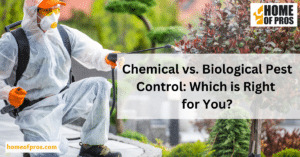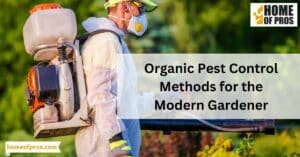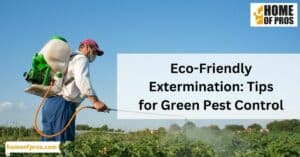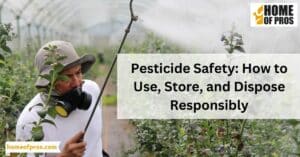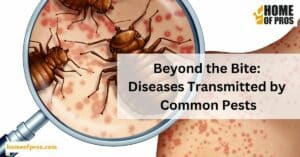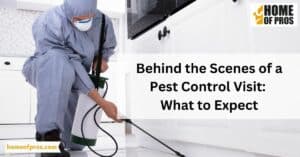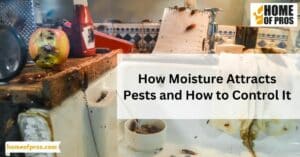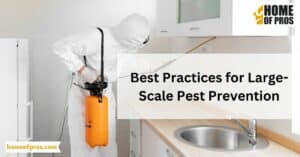Safely manage wasp and bee nests and hives with effective control measures. Use professional pest control services for safe removal and relocation. Avoid disturbing nests/hives, wear protective clothing outdoors, and seal potential entry points. Educate yourself about species’ behavior and seek expert advice to ensure the safety of both humans and pollinators.
In this guide, we will explore the best practices for safely managing nests and hives using active voice. Whether you are dealing with a small hive or a large colony, we will provide you with effective solutions to help you keep these pesky insects at bay. So, let’s dive in and learn how to take control of your outdoor space!

Importance of Wasp and Bee Control
As much as we appreciate the role of bees and wasps in pollinating our plants and flowers. It’s vital that we keep their populations in check to avoid potential problems. Bees and wasps can sometimes pose a threat to humans as they can sting. They cause pain and potential allergic reactions. Having an effective and efficient strategy for controlling bee and wasp populations. It is crucial for ensuring the safety of people and pets.
They can cause structural damage to buildings, disrupting natural habitats, and impacting agriculture production. It’s imperative to take proactive measures to prevent a potential infestation by implementing environmentally friendly approaches. Thus, to prevent an unwanted increase in population, we must carry out regular inspections, and seal off cracks. Lastly, remove sources of food that may attract these insects.
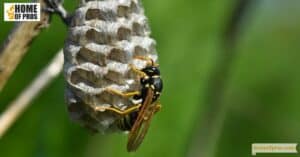
Non-Lethal Wasp and Bee Control Methods
When it comes to pest control, the options can seem overwhelming. However, for those who want to avoid using lethal means to manage a wasp or bee problem. There are non-lethal options available. Non-lethal wasp and bee control methods have become increasingly popular as people strive to find more sustainable and eco-friendly ways to deal with these pests. These methods offer an effective, humane, and sustainable way to manage wasps and bees and can be a great option for those who want to protect their home and the environment.
Natural deterrents and repellents
Effective and humane wasp and bee control methods can be achieved through natural deterrents and repellents. These non-lethal options provide a safe and effective way to keep insects at bay without impacting the environment or harming these vital pollinators. Popular natural repellents such as citronella, eucalyptus oil, or garlic have been shown to be effective in repelling wasps and bees. Additionally, a variety of deterrents such as fake wasp nests, decoys, or sticky traps can trick insects into thinking an area is already occupied or dangerous, keeping them at a safe distance.

Traps and bait stations
These methods target pests without putting humans and other animals at risk. This is especially important for those with allergies or sensitive immune systems. Traps are designed to lure wasps or bees with bait and trap them inside, preventing them from stinging anyone nearby. Bait stations, on the other hand, provide a food source that attracts the pests away from people and places where they may cause harm.
Both methods are active control methods that work well when deployed properly. When it comes to sustainable pest management, it’s smart to consider eco-friendly options that don’t harm the environment or threaten the safety of people and pets.
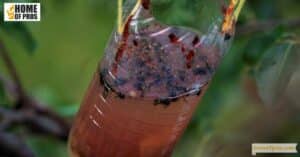
Physical nest removal techniques
When it comes to wasp and bee control, physical nest removal techniques are one option for those looking to avoid using toxic chemicals or insecticides. These non-lethal methods involve physically removing the nest from its location and relocating it to a more suitable spot, such as a beehive box or a natural habitat away from human activity.
This can be done manually using protective gear and special tools or with the help of a professional pest control service. While physical nest removal can be a time-consuming and potentially risky process, it is often considered a more humane and environmentally friendly approach to managing wasp and bee populations.
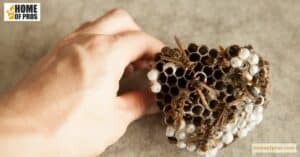
Professional Wasp and Bee Control Services
As the weather warms up, so does the activity level of wasps and bees. While these insects may seem harmless, their stings can pose a serious threat to those who are allergic. That’s why it’s important to enlist the help of professional wasp and bee control services. These experts are trained to identify the species of the insects and determine the best method of removal. They have the proper equipment and protective gear to safely and effectively eliminate the infestation.
Finding a reputable pest control company
When it comes to finding a reputable pest control company for your wasp and bee control needs, it is important to do your research. You want to make sure that you are choosing a company that has the expertise and experience necessary to safely and effectively eliminate the pests on your property. Look for a company that is licensed and insured, as this ensures that they are operating legally and taking safety precautions. Additionally, read reviews and ask for referrals from friends or family to ensure that you are choosing a reputable and reliable pest control company.
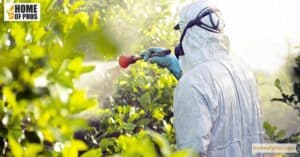
Costs and considerations
Professional pest control services can help eliminate these pests safely and effectively, but the costs can vary depending on the size of your property and the severity of the infestation. It’s important to consider the long-term costs of doing nothing, as a serious infestation can cause damage to your property or even pose a threat to your health. Working with licensed and insured professionals who use safe and eco-friendly methods can give you peace of mind knowing that your pest problem is being taken care of in a responsible manner.

DIY Wasp and Bee Control Tips
When it comes to dealing with wasps and bees, the first step is to stay calm. Attempting to swat or run away can actually increase the odds of getting stung. Fortunately, there are a few do-it-yourself tips that can help to decrease the likelihood of an encounter altogether. From homemade traps to preventative measures, taking proactive steps to control these stinging insects can be accomplished with a bit of foresight and planning.
Homemade solutions and traps
With summer comes the rise of wasps and bees, and with it, the potential for painful stings. While commercial insecticides are readily available, there are homemade solutions and traps that can be just as effective. One solution is to mix dish soap and water and spray it directly onto the insects to suffocate them. Another is to place a bowl of sugar water near their nest to distract them from other areas.
For a trap, cut a plastic bottle in half, fill the bottom with a sweet liquid, and invert the top half into the bottom, creating a funnel. The insects will enter through the funnel and drown in the liquid.

Safe removal techniques for small nests or hives
When dealing with small nests or hives in your home or yard, it’s essential to remove them safely and effectively. Wasp and bee control require a professional and proactive approach to protect yourself and those around you from potential harm. Before attempting to remove the nest or hive, ensure that you have the right tools and protective gear, such as gloves, long sleeves, and pants.
It’s essential to approach the nest or hive slowly and calmly, without making any sudden movements or loud noises. Use a pesticide spray designed for the specific type of insect, and apply it directly to the nest or hive. Leave the area immediately and wait several hours or overnight before removing the nest or hive. Always read the instructions on your pesticide spray before use, and dispose of the nest or hive properly.
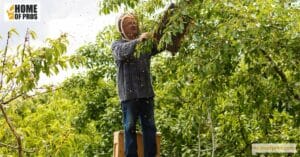
In Conclusion
Managing wasp and bee nests can be a daunting task, but with the right tools and knowledge, it can be done safely and effectively. It’s important to identify the type of bee or wasp. Also, understand their behavior patterns before attempting to remove their nests. Always wear protective clothing and use caution when approaching the nest or hive.
It’s best to call a professional if the nest is located in a hard-to-reach area or if you have an allergy to bee or wasp stings. Avoid using pesticides as they can harm beneficial pollinators and contaminate the environment. With a little awareness and care, we can coexist safely with these important insects.


